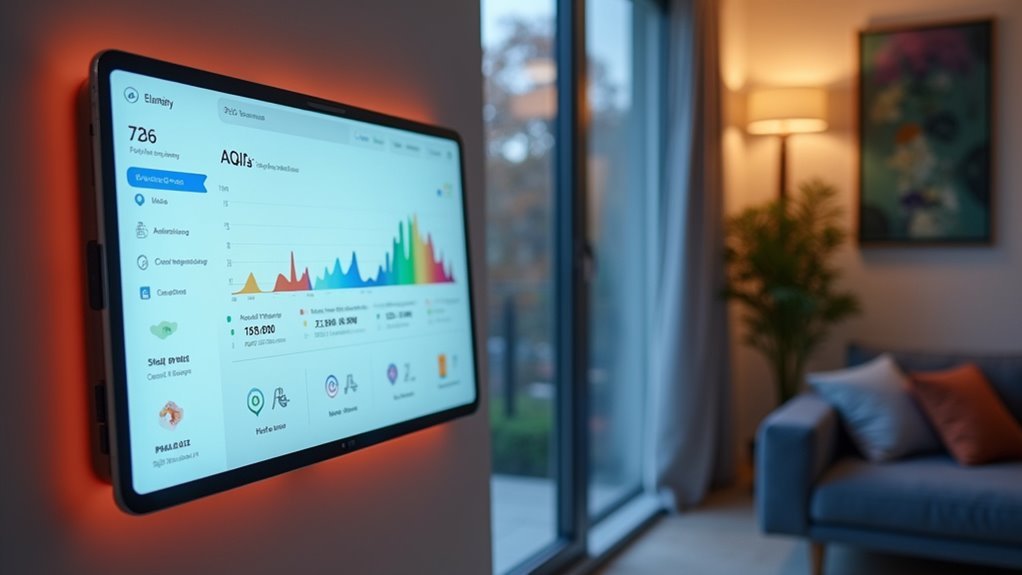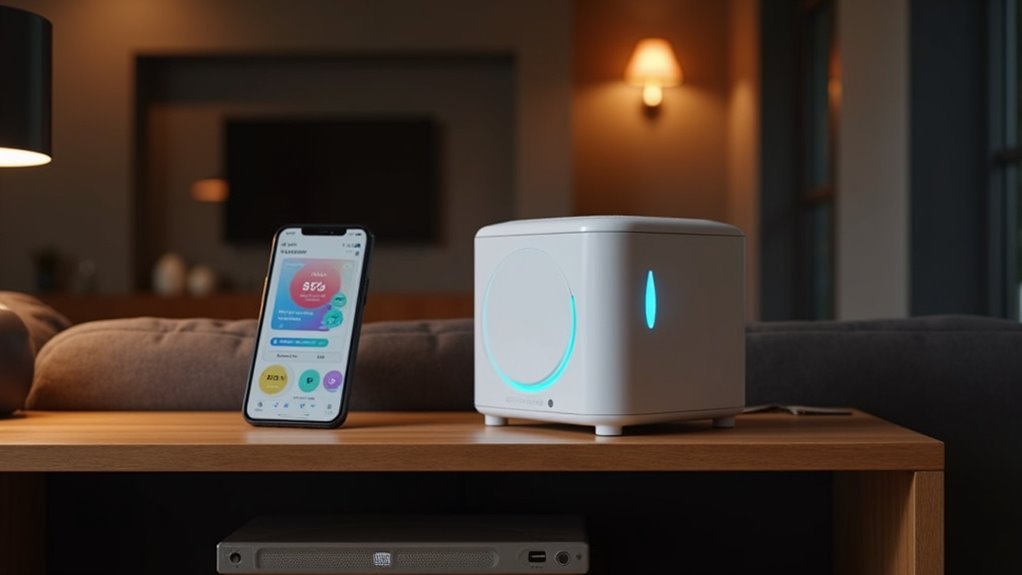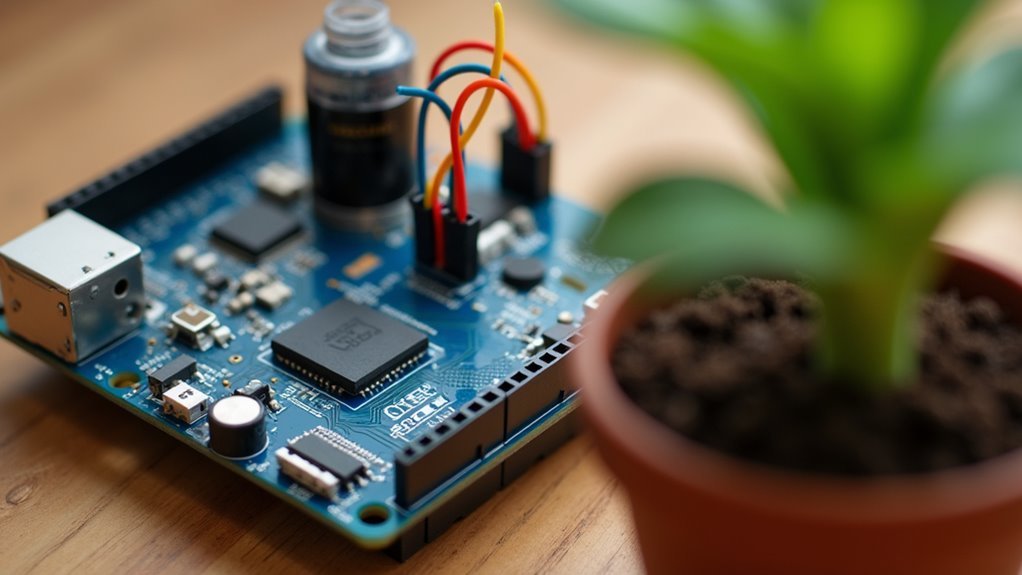You’ve probably noticed your smart home setup lacks essential air quality monitoring, leaving you guessing about the air you’re breathing daily. While Home Assistant offers countless integrations, only a select few deliver the accuracy and reliability you need for protecting your family’s health. Three standout solutions have emerged from extensive testing, each offering unique advantages that’ll transform how you monitor and respond to indoor air quality changes.
World Air Quality Index (WAQI) Integration

Since air quality monitoring has become increasingly important for health-conscious homeowners, the World Air Quality Index (WAQI) integration provides you with real-time access to global air pollution data directly within Home Assistant.
Real-time air pollution monitoring empowers health-conscious homeowners to make informed decisions about their indoor and outdoor environments.
This integration transforms your smart home into a thorough air quality monitoring system by delivering data from over 3,191 active installations worldwide.
You’ll need an API token from AQICN to configure these air quality sensors, which measure critical pollutants including PM2.5, PM10, CO, and ozone levels.
Available since version 0.34, this cloud polling integration simplifies setup through Home Assistant’s My button feature, though manual configuration remains an option.
Maintained by contributor @joostlek, the World Air Quality Index integration guarantees community-driven support and continuous improvements for peak performance.
AirGradient ONE Multi-Sensor Monitor
When thorough indoor air quality monitoring becomes essential, the AirGradient ONE multi-sensor monitor delivers professional-grade measurements of CO2, PM2.5, PM10, temperature, humidity, TVOC, and NOx levels directly to your Home Assistant setup.
This open-source ESPHome-powered device connects via Wi-Fi 2.4 GHz and Bluetooth 4.2, ensuring seamless local integration without cloud dependencies.
You’ll appreciate its built-in display providing real-time Air Quality readings for immediate awareness.
The modular design allows customization while maintaining complete privacy through local data storage.
DIY enthusiasts benefit from the device’s hackable firmware, enabling personalized configurations for specific monitoring needs.
This Indoor Air Quality Monitor transforms your Home Automation system into an all-encompassing environmental control center, delivering laboratory-grade accuracy without subscription fees or external data sharing requirements.
Apollo AIR-1 Comprehensive Air Quality System

Versatility defines the Apollo AIR-1 Extensive Air Quality System, which monitors CO2, CO, VOCs, and multiple particulate matter sizes through its modular sensor architecture.
You’ll appreciate this air quality sensor’s customizable approach that lets you select specific modules based on your monitoring requirements.
The Apollo AIR-1 enhances your smart home experience through:
- Visual feedback – RGB LEDs provide instant air quality status notifications
- Multiple connectivity options – USB-C, WiFi 2.4 GHz, and Bluetooth 5 support
- Privacy-focused storage – Local data retention eliminates cloud dependency
- Data analysis capability – Export functionality works with RStudio and MS Excel
You’ll find seamless Home Assistant integration alongside flexible smart home compatibility.
The device’s local storage guarantees your data stays private while enabling thorough analysis of your indoor environment’s air quality patterns.
Frequently Asked Questions
How to Add Air Quality to Home Assistant?
You’ll obtain an API token from AQICN, navigate to Settings > Devices & Services, click “Add Integration,” select “World Air Quality Index (WAQI),” and follow the setup instructions to complete integration.
What Is the Best Indoor Air Quality Monitoring Device?
You’ll want the Airthings View Plus for thorough monitoring of radon, CO2, VOCs, temperature, humidity, and air pressure. It’s versatile and highly regarded for complete indoor air quality management.
What Is the Best Air Quality Software?
You’ll find Home Assistant’s the best air quality software because it integrates multiple devices, creates custom dashboards, automates responses to pollution levels, and provides both indoor monitoring and global outdoor data through WAQI integration.
What Is the Most Accurate Air Quality App?
You’ll find IQAir and AirVisual offer the most accurate air quality readings since they combine government monitoring station data with independent sensors, providing real-time updates on PM2.5, CO2, and other pollutants.





Leave a Reply